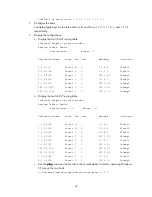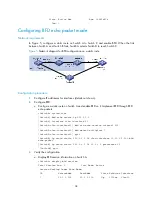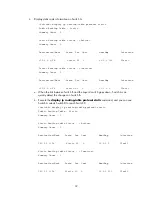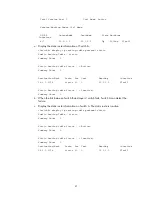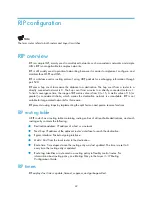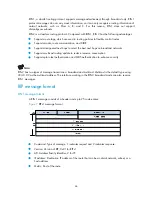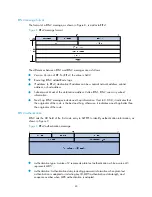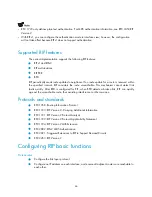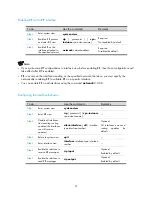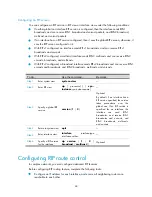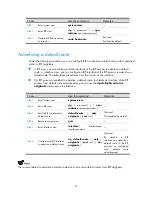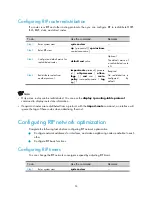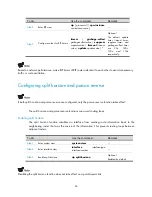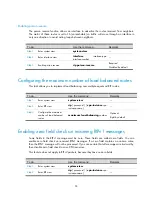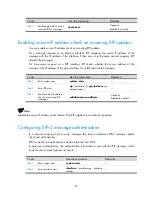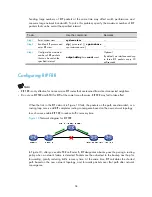
46
•
RFC 1723 only defines plain text authentication. For MD5 authentication information, see RFC 2453 RIP
Version 2.
•
With RIPv1, you can configure the authentication mode in interface view; however, the configuration
will not take effect because RIPv1 does not support authentication.
Supported RIP features
The current implementation supports the following RIP features:
•
RIPv1 and RIPv2
•
RIP multi-instance
•
RIP FRR
•
BFD
RIP periodically sends route updates to neighbors. If no route update for a route is received within
the specified interval, RIP considers the route unreachable. This mechanism cannot detect link
faults quickly. After BFD is configured for RIP, when BFD detects a broken link, RIP can quickly
age out the unreachable route, thus avoiding interference to other services.
Protocols and standards
•
RFC 1058: Routing Information Protocol
•
RFC 1723: RIP Version 2 - Carrying Additional Information
•
RFC 1721: RIP Version 2 Protocol Analysis
•
RFC 1722: RIP Version 2 Protocol Applicability Statement
•
RFC 1724: RIP Version 2 MIB Extension
•
RFC 2082: RIPv2 MD5 Authentication
•
RFC 2091: Triggered Extensions to RIP to Support Demand Circuits
•
RFC 2453: RIP Version 2
Configuring RIP basic functions
Prerequisites
•
Configure the link layer protocol.
•
Configure an IP address on each interface, and ensure all adjacent routers are reachable to
each other.
Summary of Contents for S9500E Series
Page 435: ...435 ...



